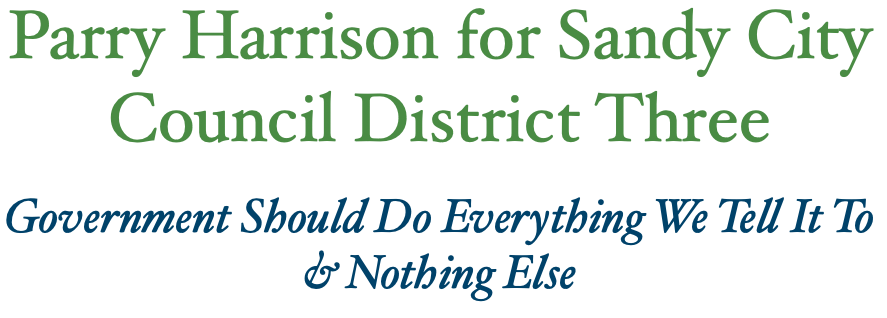Sandy’s General Plan: Section 2 - Livability
This will be a series of thoughts on our City’s General Plan. I think it is best to start with this document as the base for any conversation about our city. It is the result of extensive community feedback and expert planning.
Why I’m Running: To Keep Sandy Livable for Everyone
When I think about what makes Sandy such a special place, it comes down to livability—the ability to feel safe, supported, connected, and proud of where we live. Section 2 of the General Plan focuses on just that, and it’s the heart of why I’m running for City Council. I want to make sure Sandy remains a place where everyone—from our kids to our grandparents—can thrive.
Livability Isn’t Accidental—It’s the Result of Planning
This plan recognizes that livability doesn’t just happen; it’s the result of intentional decisions about land use, housing, transportation, and access to essential services. As your councilmember, I’ll work to make sure those decisions reflect the voices of our community and focus on making everyday life easier, safer, and more fulfilling.
Supporting Mixed Housing for Real People’s Needs
People want to live in Sandy, but too many are being priced out. I support diversifying our housing options, while maintaining ownership—creating neighborhood areas with everything from single-family homes to duplexes, condo mansions, and accessory dwelling units. We can honor neighborhood character while still making room for our teachers, service workers, and young families to live here too.
Walkable Neighborhoods Should Be the Norm, Not the Exception
The General Plan calls for complete neighborhoods—places where residents can safely walk to schools, shops, parks, and transit. That’s exactly the kind of development I’ll fight for in District 3. We deserve streets that work for people, not just cars, and zoning that supports a mix of uses within reach of home.
Affordable Living Is More Than Just Rent or Mortgage
True affordability means being able to meet your needs without constantly stressing about cost. That’s why I support policies that improve access to transit, reduce energy bills through smart building codes, and provide community amenities like parks, trails, and childcare close to home. Livability is about the full picture of a family’s day-to-day life.
Livability Includes Dignity and Access for All Ages
From playgrounds for our kids to accessible sidewalks for seniors, every generation deserves to feel at home in Sandy. I’ll push for age-friendly design in our public spaces, safer pedestrian infrastructure, and programs that allow seniors to age in place while staying connected to their communities.
Thriving Local Businesses Build Livable Communities
Livable neighborhoods depend on vibrant local businesses—coffee shops, restraunts, salons, clinics, and markets we can walk to. I support removing outdated zoning barriers that prevent these types of community-serving businesses from taking root in our residential areas. Let’s make it easier for small business owners to invest in our neighborhoods.
Keeping Livability Front and Center During Change
As we change and redevelop, we must prioritize quality of life—not just the number of units or square footage. I’ll advocate for development that integrates green space, buffers from traffic, noise reduction, and connections to the broader city network. Change should enhance livability, not undermine it.
Public Input Is Essential to Livable Cities
Livability looks different for every neighborhood, which is why community input matters. I’ll fight to expand outreach, listen to those who don’t often get heard, and ensure every project considers real-world impacts on existing residents—not just future projections or outside developers’ goals.
A Livable Sandy Is a Strong, Resilient Sandy
At the end of the day, a livable city is one where people want to stay, raise families, start businesses, and give back. That’s the Sandy I believe in. As your councilmember, I’ll work every day to keep Sandy livable—not just in buzzwords or brochures, but in the real experiences of those of us who call it home.

